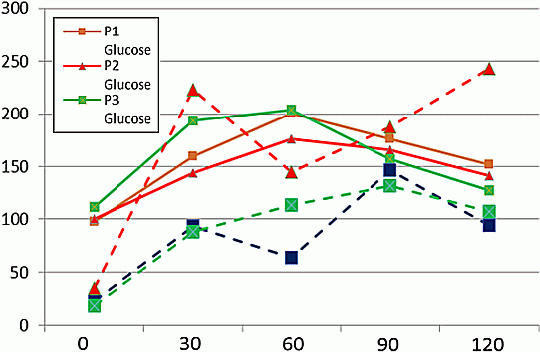ESPE2016 Free Communications Growth: Clinical (6 abstracts)
PAPP-A2 Gene Mutation Effects on Glucose Metabolism and Bone Mineral Density and Response to Therapy with Recombinant Human IGF-I
Catalina Cabrera Salcedo , Vivian Hwa , Leah Tyzinski , Melissa Andrew , Halley Wasserman , Philippe Backeljauw & Andrew Dauber
Cincinnati Children’s Hospital Medical Center, Cincinnati, OH, USA
Background: PAPP-A2 (pregnancy-associated plasma protein A2) deficiency, caused by homozygous mutations in the PAPP-A2 gene results in a novel syndrome of significant growth failure. PAPP-A2 cleaves IGF binding proteins 3 and 5, thereby freeing IGF-I from its ternary complex and allowing it to become biologically active. We recently reported the first two families with PAPP-A2 mutations. Response to recombinant human IGF-I (rhIGF-1) in these patients is unknown.
Objective and hypotheses: This study aimed to describe additional phenotypic features of patients with PAPP-A2 deficiency including glucose handling and bone mineral density (BMD) as well as to determine response to IGF-I therapy.
Method: Three siblings with a homozygous missense mutation in PAPPA2 (Ala1033Val) participated. Oral glucose tolerance tests, DXA, and renal/spleen ultrasonography were performed in the three patients. The two youngest boys, age ten and fourteen, were started on treatment with rhIGF-I.
Results: The two elder siblings had elevated fasting glucose and impaired glucose tolerance with marked hyperinsulinemia. The youngest brother showed signs of insulin resistance (Figure). Hemoglobin A1c was normal in all three siblings. Bone densitometry showed that patients with PAPP-A2 gene mutation have mildly decreased size-corrected BMD (Table). Renal and spleen size was normal. On day 51 after initiation of therapy with rhIGF-I one of the patients developed severe headache and was diagnosed with pseudotumor cerebri. Therapy discontinuation resulted in resolution of symptoms. Treatment is ongoing in the younger sibling.

| Z-score adjusted for height | |||||
| Patient (Age) | Height (SD) | Whole Body BMC | Spine BMD | Hip BMD | Forearm BMD |
| P1 (19) | 138.1 cm (−3.8) | −0.99 | −0.98 | −0.24 | −0.04 |
| P2 (14) | 141.9 cm (−2.9) | −2.08 | −1.41 | −1.94 | −3.07 |
| P3 (10) | 121.0 cm (−3.0) | −1.28 | −0.12 | −0.54 | −0.54 |
Conclusion: PAPP-A2-deficient patients have abnormal glucose handling and insulin resistance which are likely related to elevated growth hormone and decreased free IGF-1 levels. These patients were also found to have mildly decreased size-corrected BMD. Increased intracranial pressure developed early on during rhIGF-I therapy in one of the patients. Nine month response to therapy of the younger patient will be presented at ESPE 2016 meeting.




